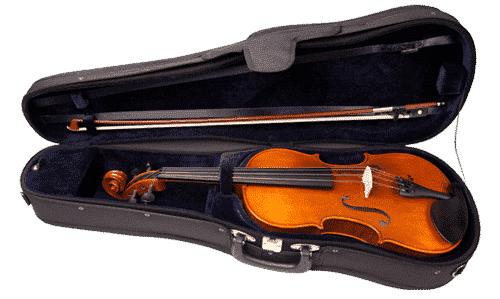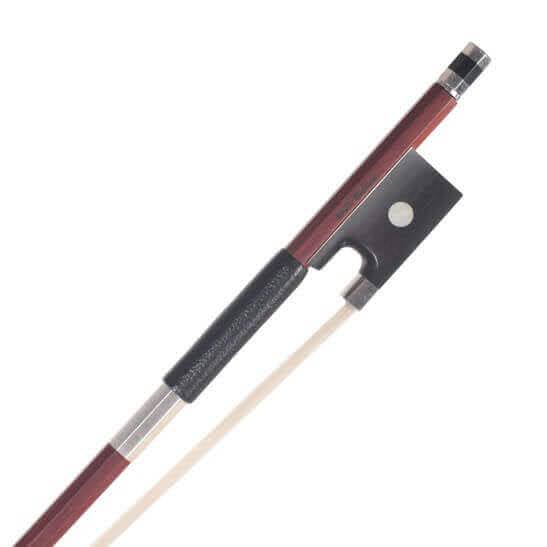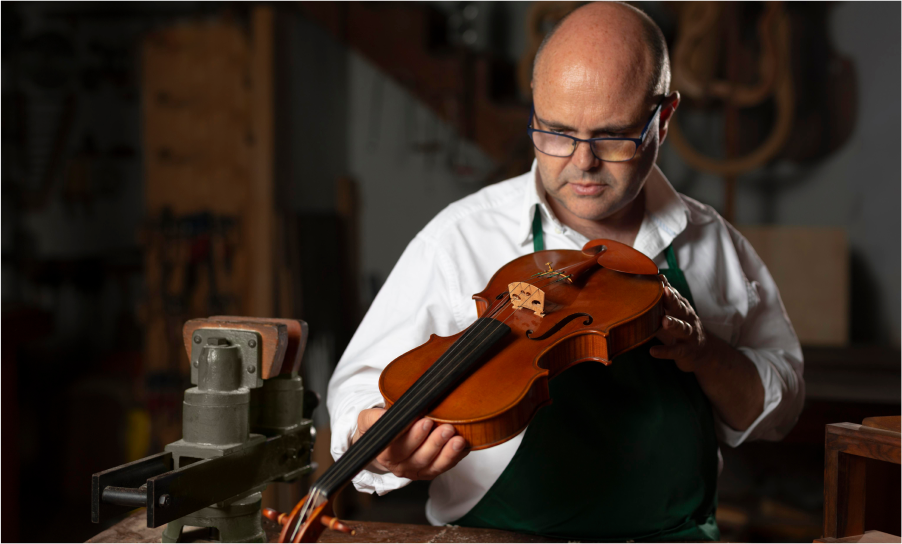Diving into the world of violin maintenance and care is like discovering the secret to preserving the voice and soul of your cherished instrument. Like a garden thrives with regular tending, your violin blossoms with consistent care, ensuring every note it plays is as vibrant and soul-stirring as the last.
From the gentle swipe of cleaning cloth to the precise adjustment of strings and the crucial positioning of the sound post, every action contributes to the instrument’s longevity and the quality of sound it produces. Whether you’re a seasoned player or a passionate beginner, understanding the nuances of “how to take care of a violin” is vital to a rewarding musical journey. Let’s embark on this journey together, exploring essential instrument care tips and advice to keep your violin in perfect harmony.
The Essentials of Daily Violin Care
Incorporating these daily care routines into your practice ensures that your musical instruments remain a treasured companion on your musical journey.
Proper Handling and Storage Of Your Stringed Instrument

Handling your violin with care is fundamental to its longevity. Always hold it by the neck to avoid touching the body and potentially damaging the varnish or affecting the sound quality. Store your violin in a sturdy case in a stable environment, away from extreme temperatures and humidity when not in use. This simple routine prevents accidental damage and keeps your instrument safe and sound, ready for your next practice or performance.
Keeping Your Violin Clean: A Key to Preservation
A clean violin not only looks beautiful but also maintains its sound integrity. Use a soft, dry cloth to gently wipe away rosin dust from the body, strings, and violin bridge after each use. Use a slightly damp cloth on the body for more stubborn grime, but avoid letting moisture directly contact the wood. There are specialized products designed for violin care, such as polish and cleaner, but you should use them sparingly and only when necessary. Remember, the goal is to preserve your violin’s natural beauty and sound without exposing it to harmful chemicals.
Bow Care: Ensuring the Perfect Stroke

Violin bows are as crucial as the violin; keeping them clean is essential for a clear, beautiful sound. Regularly wiping the bow stick with a clean cloth removes rosin buildup and preserves the wood’s quality. Periodically rehairing the bow is vital, as worn-out horsehair affects the sound quality and playability. Proper tension is also crucial; always loosen the bow hair after playing to prevent warping and maintain its optimal shape. In this way, your delicate instrument remains in top shape.
Understanding and Caring for Violin Strings
Caring for your violin strings enhances acoustic instrument performance and deepens your connection to the music you create. But before we dive into caring tips, let’s discuss their types:
The Symphony of Strings: Types and Their Impact
Violin strings come in various materials, each with unique sound and playability. Gut strings, revered for their rich, warm tones, are perfect for baroque and classical music. Synthetic strings offer a similar sound with added durability and stability, making them a favorite among musicians of all levels. Steel strings, known for their bright, clear sound, excel in contemporary and folk music. Choosing the correct type of string can transform your violin’s voice, making it essential to match your musical style and personal preference.
String Care: How To Clean A Violin String
Regular cleaning is crucial to extend the life of your strings and maintain the quality of sound of your delicate instruments. After playing, gently wipe your strings with a soft, dry cloth to remove rosin and sweat. Avoid using cleaning solutions, as they can damage the strings and the violin’s varnish. Also, periodically check for fraying or corrosion, indicators that your strings are wearing out and affecting your instrument’s sound quality.
Knowing When to Say Goodbye: Replacing Your Strings
Strings don’t last forever, and knowing when to replace them is vital to keeping your violin sounding its best. Look for signs like a lack of resonance, difficulty tuning, or visible wear. Replacing strings one at a time can prevent drastic changes in tension that affect the violin’s setup. When changing strings, ensure each is correctly positioned in the bridge and pegbox, maintaining the right angle and tension for optimal sound and playability. Experts at Ronald Sachs Violins specialize in violin repair and sale. From accessories to instruments, they have it all. Check out the violins for sale in their collection.
The Significance of the Sound Post
An essential part of violin care is attending the sound post. Know what it is and how to care for it.
The Heartbeat of Your Violin: The Sound Post’s Role
The sound post, nestled inside the violin, might be out of sight, but its role in sound production is paramount. This small wooden dowel bridges the violin’s front and back, transmitting vibrations across the instrument. Its position directly influences the violin’s tone, volume, and overall sound quality, making it a core component of the instrument’s voice.
Spotting Signs of Trouble: Position and Adjustment
A correctly positioned sound post is vital to a well-balanced sound. Signs that might need adjustment include a lack of resonance, uneven tone across the strings, or difficulty in playing specific notes. Assessing the sound post’s position visually without special tools is challenging, but a sudden change in your violin’s sound can be a telltale sign. So, when searching for how to play the violin, ensure your sound post is in good condition.
Tread Lightly: DIY Risks and Benefits of Professional Adjustment

Adjusting the sound post is a delicate task that requires expertise and the right tools. The risks of DIY adjustments include damaging the violin’s interior or altering its sound negatively. Seeking professional help ensures your violin is in expert hands and can fine-tune the sound post’s position to enhance the instrument’s tonal quality and resonance. A luthier’s touch can breathe new life into your violin, ensuring the sound post contributes to its fullest potential in sound production.
Humidity and Temperature: The Silent Factors of Stringed Instruments
Significantly extend the life and preserve the sound quality of your beloved violin by safeguarding it against humidity and temperature changes.
The Invisible Threat: Humidity and Temperature Impact
Extreme humidity and temperature swings are kryptonite to your violin. High humidity can cause the wood to swell, potentially leading to warped shapes and compromised sound. On the flip side, dry conditions can shrink the wood, risking cracks that are costly to repair and detrimental to the instrument’s integrity. Temperature fluctuations further stress the wood, amplifying these risks and affecting tuning stability.
Shielding Your Violin: Proactive Protection
Proactive measures to combat these invisible threats are your best defense. Using a room humidifier or dehumidifier can stabilize the environment where you store your violin, keeping humidity levels constant. Avoid leaving your violin near heat sources or in a cold vehicle for temperature control. Investing in a quality violin case with humidity and temperature control features offers extra protection, ensuring your instrument remains in optimal condition regardless of the season.
Periodic Maintenance Checks and Professional Setup
To keep your violin’s performance top-notch, you should maintain it regularly. Here’s how:
The Luthier’s Role: Ensuring Your Violin’s Health
Just like visiting the doctor for a check-up, regular visits to a professional luthier are essential for your violin’s well-being. These experts can spot issues that might go unnoticed but could lead to more significant problems. Regular check-ups ensure your violin remains in peak condition, allowing you to play your best without unexpected hiccups.
A Closer Look: The Professional Setup Process
A luthier meticulously adjusts the bridge, pegs, and tailpiece during a professional setup, ensuring they are perfectly aligned and functioning. Set the bridge to the correct height and curvature for optimal string tension and playability. Adjust the pegs for smooth tuning without slipping. The tailpiece is secured and checked for the correct after-length, affecting the violin’s tone and response. Fine tuners enhance the instrument’s sound, playability, and comfort.
Heeding the Call: When to Seek Professional Help
Recognizing when your violin needs professional attention is vital. Issues like persistent tuning problems, buzzing sounds, or difficulty playing at certain positions signal it’s time for a luthier’s touch. Also, if you notice any physical damage or changes in your instrument’s sound quality, don’t hesitate to consult a professional. Their expertise not only fixes immediate concerns but also preserves your violin’s longevity and performance. Ronald Sachs Violins is a leading violin shop in Atlanta that offers repair services.
Conclusion
Maintaining and caring for your violin ensures longevity and enhances your musical journey. By following these practices diligently, you preserve your instrument and deepen your connection to it. Treat your violin carefully and respectfully; it will reward you with beautiful, resonant tones for years. Incorporate these habits into your routine for a more fulfilling musical experience.
